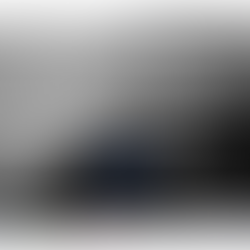The Importance of Modern Web Design for Businesses
- TOM JACKSON

- May 16
- 4 min read
Updated: Jun 11
In today’s digital world, your website is often the first point of contact between you and your customers. Modern web design is essential for businesses looking to establish a strong online presence. An attractive, functional, and user-friendly website can significantly elevate your brand, enhance user experience, and drive conversions.
Why is Modern Web Design Crucial?
Modern web design does more than just make your site look good. It plays a pivotal role in how users perceive your brand. A well-designed website can build trust, improve user engagement, and boost credibility. Studies show that 94% of first impressions relate to your website's design.
People are drawn to visually appealing sites. If your website looks outdated or is difficult to navigate, visitors are likely to leave and seek alternatives. On the flip side, a modern, professional design can keep users on your site longer, increasing the chances they will convert into customers.

Key Elements of Modern Web Design
When it comes to modern web design, several key elements contribute to an effective online presence:
1. User Experience (UX)
UX refers to how users interact with your website. A good UX design leads users through your site effortlessly, making information easy to find. This includes intuitive navigation, fast loading times, and mobile optimization.
Statistics indicate that 88% of online consumers are less likely to return to a site after a bad experience. Prioritizing UX in your web design ensures that visitors find what they’re looking for efficiently.
2. Visual Hierarchy
Visual hierarchy entails arranging content in a way that conveys importance. This means using size, color, and placement to guide users towards key elements on your site, like calls to action or contact information.
For instance, if your contact button is small and buried in the footer, few people will notice it. Ensure that vital information stands out to engage users effectively.

3. Mobile Responsiveness
In an era of smartphones, mobile responsiveness is crucial. This means your website should look and function seamlessly across various devices. According to Google, over 50% of searches are conducted on mobile devices.
A website that isn’t optimized for mobile can frustrate users, ultimately leading to high bounce rates. Investing in responsive web development enhances usability and accessibility.
What are the 3 Basic Things Required for Responsive Web Design?
Responsive web design hinges on three fundamental principles:
Fluid Grids: Traditional layouts are based on fixed sizes, but fluid grids use percentages to adapt the layout to different screen sizes. This ensures content maintains its structure, regardless of the device.
Flexible Images: Images should also be responsive. Using CSS to adjust image sizes and scaling ensures they fit well in any layout without losing quality or increasing load times.
Media Queries: Media queries allow you to apply different styles based on device characteristics, such as screen size or orientation. This capability enables you to customize the user experience for each device.
With these three elements in place, your website can deliver a consistent experience for all users.

The Role of Color and Typography
The right color palette and typography greatly enhance your web design. Colors evoke emotions and can influence user behavior.
For instance, blue is often associated with trust and professionalism, making it a popular choice among financial institutions. On the other hand, vibrant colors can create excitement and engagement, making them ideal for e-commerce sites.
Typography is equally essential. Well-selected fonts enhance readability and convey your brand's personality. Avoid using too many font styles, as this can clutter your design and distract users.
SEO and Modern Web Design
Search engine optimization (SEO) is deeply intertwined with web design. A visually appealing site that lacks SEO can struggle to rank in search engine results, hindering your online visibility.
A few key points include:
Load Speed: Slow-loading web pages can frustrate users and hurt your SEO rankings. Optimize images and streamline code to enhance speed.
Mobile-Friendliness: Search engines prioritize mobile-friendly sites. Ensure your website meets this standard to improve your ranking.
High-Quality Content: Content quality affects both user engagement and SEO. Creating valuable, informative, and optimized content will keep visitors on your site longer and improve your search rankings.
Future Trends in Web Design
As technology evolves, so does the world of web design. Here are some trends to watch for:
Dark Mode: More websites are offering dark mode as an option. This not only provides aesthetic appeal but can reduce eye strain for users.
Micro-Animations: Subtle animations can enhance user experience by drawing attention to important areas of a webpage without overwhelming users.
Voice User Interface (VUI): With the rising popularity of voice search, optimizing your site for voice queries could lead to increased traffic.
Staying ahead of these trends will enable you to maintain a contemporary online presence that resonates with users.
Final Thoughts on Modern Web Design
Investing in modern web design is no longer optional; it’s a necessity for businesses looking to grow in the digital space. By focusing on user experience, leveraging aesthetic elements, and adapting to emerging trends, you can create a powerful online presence that attracts and converts customers.
In summary, evaluate your current web design and consider areas for improvement. Whether you decide to make small tweaks or undergo a complete redesign, ensuring your website aligns with modern standards can deliver substantial long-term benefits for your business.

















